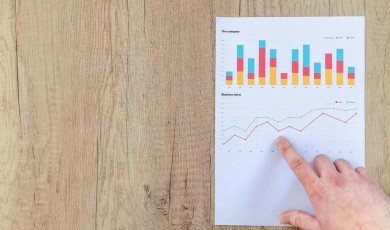
Artificial intelligence is rapidly reshaping the entire media ecosystem, but nowhere is the impact more obvious than in business journalism. From real-time market coverage to in-depth investigative reporting on global corporations, AI is transforming how stories are discovered, verified, and delivered to readers across platforms and devices.
Modern AI productivity tools are enabling newsrooms, financial publishers, and independent analysts to handle massive streams of data, automate repetitive editorial tasks, and uncover insights that would be nearly impossible to detect manually. As a result, the speed, accuracy, and depth of business news coverage are evolving at an unprecedented pace.
1. Automating Real-Time Market Monitoring
Business news lives and dies on speed. Markets move in milliseconds, and a single headline can trigger volatility across currencies, equities, and commodities. AI-driven monitoring systems continuously scan stock exchanges, corporate filings, macroeconomic releases, and alternative data sources such as shipping logs or satellite imagery. These systems can instantly detect anomalies—unusual price spikes, trading volumes, or sentiment shifts—and flag them for editors or automatically generate alerts.
Instead of manually watching multiple information terminals, reporters can focus on contextualizing market movements. AI reduces latency between a market event and its appearance in the news feed, giving publishers a competitive edge and helping readers make better-timed decisions.
2. Turning Unstructured Financial Data into Story Leads
Corporate documents, earnings calls, regulatory filings, and investor presentations are rich in insights but notoriously dense. Natural language processing models can now parse thousands of pages in seconds, extracting key metrics, management guidance, risk factors, and changes in language compared to prior reports. This capability turns unstructured data into structured story leads.
Journalists can quickly see where a company is quietly downgrading expectations or shifting strategic priorities. AI highlights unusual phrasing, discrepancies between verbal commentary and written filings, or sudden emphasis on particular business segments—all of which can spark deeper investigative pieces and more nuanced coverage.
3. Enhancing Fact-Checking and Reducing Errors
Accuracy is non-negotiable in business journalism, where a single misreported figure can move markets or damage reputations. AI-powered fact-checkers compare draft articles against trusted databases, historic coverage, and primary documents to identify potential numerical errors, misquotes, or inconsistent timelines.
These systems can automatically validate ticker symbols, verify executive titles, and cross-check core financial indicators such as revenue, profit margins, and debt levels. As a result, the editorial process becomes more robust, allowing human editors to focus on judgment calls and narrative quality rather than manual verification of every data point.
4. Personalizing Business News for Every Reader
The traditional “one front page for everyone” model is being replaced by dynamic, AI-driven personalization. Algorithms analyze reading behavior, engagement time, industry interests, and even professional roles to tailor news feeds for each user. A portfolio manager may see in-depth market analysis and regulatory updates, while a startup founder is served stories about fundraising trends, venture capital activity, and emerging markets.
This personalization not only increases reader satisfaction and retention, but it also pushes publishers to invest in diverse content angles. When AI reveals strong demand for niche topics—such as climate risk disclosure or supply-chain reshoring—newsrooms can allocate resources more strategically.
5. Powering Advanced Data Visualizations and Explainers
Complex financial stories often hinge on data that can be hard to grasp in plain text. AI-driven visualization tools convert large datasets into interactive charts, maps, and dashboards that update automatically as new information flows in. These tools can suggest the most intuitive visual format for a dataset—line graphs for trends, heat maps for sector performance, or network diagrams for ownership structures.
Business readers benefit from clear, visual narratives that reveal patterns, correlations, and outliers at a glance. For publishers, this creates more engaging, high-value content that stands out amid commodity news and boosts user time-on-site and shareability.
6. Enabling Deeper Investigations into Corporate Behavior
Investigative business reporting increasingly relies on big data: procurement records, lobbying disclosures, patent filings, trade databases, environmental reports, and more. AI can aggregate and analyze these sprawling datasets to identify unusual relationships—such as undisclosed related-party transactions, synchronized price changes across competitors, or shifts in supply routes suggesting sanctions evasion.
These capabilities help journalists uncover stories of corporate misconduct, anti-competitive behavior, or greenwashing. While human judgment still guides the final narrative, AI drastically reduces the time required to surface patterns worth investigating and adds analytical rigor to the findings.
7. Streamlining Multilingual and Cross-Border Coverage
Business is global, and so is business news. AI-powered translation has reached a stage where financial terminology, legal terms, and industry-specific jargon can be translated reliably across dozens of languages. This allows newsrooms to monitor regulatory announcements, company statements, and local coverage from around the world in near real time.
Cross-border stories—such as supply chain disruptions, regulatory crackdowns, or foreign investment trends—can be reported with greater depth and speed. Smaller outlets and independent analysts especially benefit, as they can tap into primary sources that were previously locked behind language barriers.
8. Summarizing Long Reports for Time-Pressed Readers
The universe of financial research, analyst notes, and policy documents is expanding faster than any individual can read. AI summarization models ingest lengthy reports and generate concise, accurate overviews that highlight key risks, opportunities, and scenarios. Business journalists use these as starting points to quickly understand a topic before conducting interviews or writing deeper analyses.
For readers, automated summaries integrated into articles or sidebars provide quick takeaways without sacrificing nuance. This keeps executives, investors, and professionals informed even when they cannot commit to full-length reports.
9. Supporting Revenue Models with Smarter Content Strategy
Sustainable business journalism depends on viable revenue models, and AI contributes behind the scenes as well. Analytics systems predict which topics will drive subscriptions, which formats convert casual visitors into paying readers, and which coverage areas are under-served. They can recommend paywall strategies, optimal content length, and the timing of major reports based on user behavior.
By aligning editorial planning with data-driven insights, publishers can invest in the types of business coverage that both serve the public interest and strengthen their financial footing.
10. Redefining the Journalist’s Role, Not Replacing It
Despite rapid advances, AI does not eliminate the need for experienced business journalists. Instead, it changes their day-to-day work. Machines excel at pattern recognition, data processing, and automation, while humans provide context, skepticism, ethical judgment, and narrative craft. The most successful newsrooms are those that treat AI as a collaborator—handling the heavy analytical lifting while journalists focus on asking better questions and telling more compelling stories.
This partnership leads to richer coverage, more inclusive perspectives, and a greater capacity to explain how complex financial forces affect real people, from employees and entrepreneurs to consumers and communities.
Conclusion: A New Era of Intelligent Business Reporting
The integration of AI into business journalism is not a passing trend; it marks a structural shift in how economic and corporate information is collected, interpreted, and shared. Automated monitoring, data extraction, personalization, visualization, and multilingual capabilities are enabling news organizations of all sizes to compete on speed and depth.
As AI continues to evolve, the most impactful business news will come from teams that blend technological sophistication with human insight. The future of financial reporting belongs to those who can harness intelligent systems to illuminate the stories behind the numbers—delivering sharper, faster, and more trustworthy coverage in an increasingly complex global economy.








